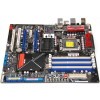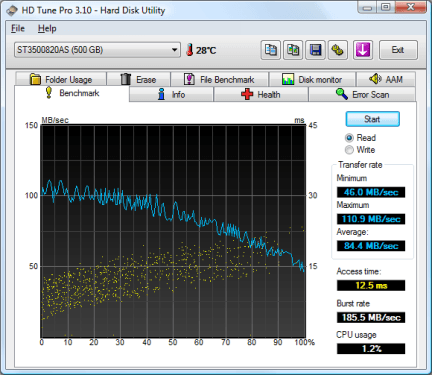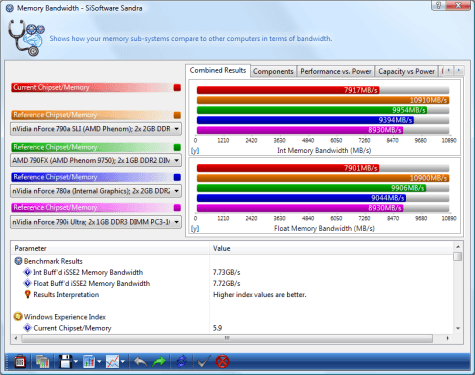- Qualcomm Launches Snapdragon 4 Gen 2 Mobile Platform
- AMD Launches Ryzen PRO 7000 Series Mobile & Desktop Platform
- Intel Launches Sleek Single-Slot Arc Pro A60 Workstation Graphics Card
- NVIDIA Announces Latest Ada Lovelace Additions: GeForce RTX 4060 Ti & RTX 4060
- Maxon Redshift With AMD Radeon GPU Rendering Support Now Available
ASUS Rampage II Extreme – The Definitive Overclocking Board?

ASUS has long supported overclockers with their motherboards, but the Rampage II Extreme takes things to the next level. In addition to an even more robust BIOS than what we’re used to, we’re given the ability to put our multi-meters to good use with the help of easy-access board contacts. When all said and done though, is the RIIE really worth the $400 asking price?
Page 6 – System: HD Tune Pro, SiSoftware Sandra 2009
While application performance shouldn’t vary much between motherboards, one area where we can see greater differences is with synthetic benchmarks – at least with those that test both the storage and memory bandwidth/latency. Even still, if differences are seen, you are very unlikely to notice the difference in real-world usage, unless the performance hit is significant, which we’ve not found on any board we’ve tested in the past.
To test the storage I/O, we use a tool that we’ve been using for a number of years, HD Tune. The developer released a “Pro” version not long ago, so that’s what we are using for all of our storage-related benchmarking. The drive being tested is a secondary, installed into the first available Slave port, and is not the drive with the OS installed. To avoid potential latency, the drive is tested once Vista is idle for at least five minutes, and CPU usage remains stable at >1%.

It’s safe to say that for the most part, differences seen in I/O tests is minimal, as this graph shows. All winners and no losers, which is what we’d hope to see.
SiSoftware Sandra 2009
Yet another classic tool from our toolbox, SiSoftware’s Sandra is one of the ultimate benchmarking sidekicks around, allowing us to test almost every-single component in our PC, from CPU to GPU to memory to storage. In the case of our motherboard reviews, we stick with the memory bandwidth and latency tests, since its an area where some differences could very-well be seen.
As mentioned above, the results here don’t represent real-world performance, and if one motherboard sees the memory 4ns slower, the chances of you noticing the hit in real usage is highly unlikely, if not impossible. If any scenario would be effected, it would be processes that last the course of a few hours, not a few minutes.


Once again, minor differences here, although the RIIE does manage to excel in the bandwidth test. It falls a bit short compared to the EX58-UD5 from Gigabyte where latency is concerned though.
Support our efforts! With ad revenue at an all-time low for written websites, we're relying more than ever on reader support to help us continue putting so much effort into this type of content. You can support us by becoming a Patron, or by using our Amazon shopping affiliate links listed through our articles. Thanks for your support!







